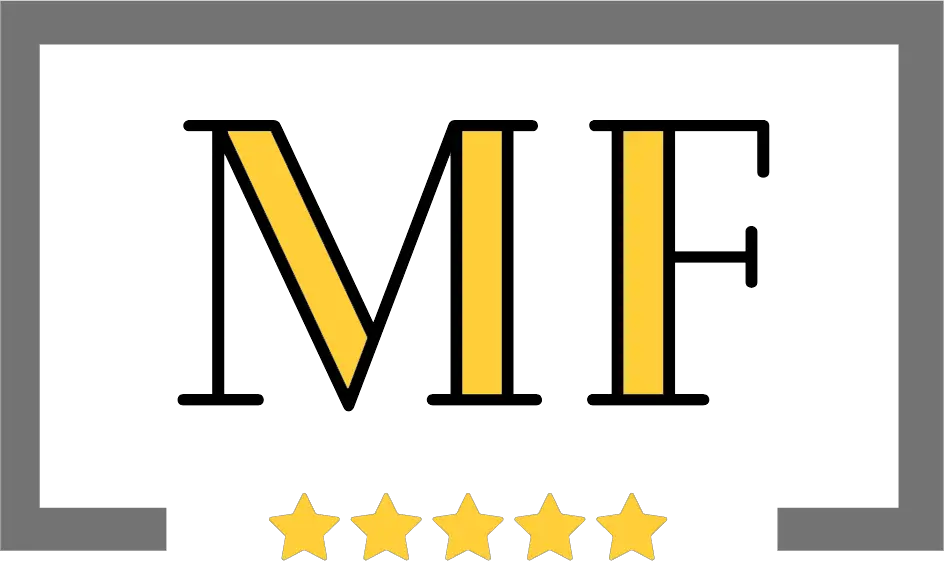Details
Introduction to Medical Insurance
Medical insurance is a fundamental component of the modern healthcare system, designed to provide financial assistance for medical expenses. It operates through a contractual relationship between the policyholder and the insurance company, wherein the policyholder pays a regular fee, known as a premium, in exchange for coverage of certain medical costs. This coverage can include a range of services, from routine check-ups to emergency surgeries.
At its core, medical insurance aims to mitigate the financial burden of healthcare by distributing costs across a larger pool of individuals. This collective approach ensures that the risk and cost of medical care are shared, making healthcare more accessible and affordable. Without medical insurance, individuals might face exorbitant out-of-pocket expenses, which can be financially devastating.
Several key terms are central to understanding medical insurance. Premiums are the regular payments made by the policyholder to maintain their insurance coverage. Deductibles refer to the amount the policyholder must pay out-of-pocket before the insurance company begins to cover expenses. Copayments, or copays, are fixed amounts the policyholder pays for specific services, such as visiting a doctor or purchasing prescription medications. Coverage limits denote the maximum amount an insurance company will pay for covered services within a specific period.
Multiple entities play critical roles in the medical insurance ecosystem. Insurance companies design and offer insurance plans, manage premiums, and process claims. Healthcare providers include doctors, hospitals, and clinics that deliver medical services to patients. Policyholders are the individuals or groups who purchase insurance policies to protect themselves against high medical costs.
Understanding these basic concepts and the interplay between different entities is essential for navigating the complexities of medical insurance. As we delve deeper into the specifics, it becomes clear how integral medical insurance is to ensuring that individuals receive necessary care without incurring prohibitive costs.
Types of Medical Insurance Plans
Medical insurance is a critical component of healthcare management, providing financial protection against medical expenses. Understanding the types of medical insurance plans available is essential for making informed decisions. The primary types of medical insurance plans include Health Maintenance Organizations (HMOs), Preferred Provider Organizations (PPOs), Exclusive Provider Organizations (EPOs), and Point of Service (POS) plans. Each plan type has distinct characteristics, benefits, and potential drawbacks.
Health Maintenance Organizations (HMOs) focus on providing care through a network of healthcare providers. Members are required to select a primary care physician (PCP) who coordinates all healthcare services and provides referrals to specialists within the network. HMOs typically offer lower premiums and out-of-pocket costs, but they limit flexibility by requiring members to use network providers.
Preferred Provider Organizations (PPOs) provide more flexibility compared to HMOs. Members are encouraged to use a network of preferred providers but have the option to seek care outside the network at a higher cost. PPOs do not require referrals to see specialists, making them a suitable choice for individuals who prefer greater freedom in selecting healthcare providers. However, this flexibility often comes with higher premiums and out-of-pocket expenses.
Exclusive Provider Organizations (EPOs) combine elements of HMOs and PPOs. EPO members must use network providers for all non-emergency care, similar to an HMO, but do not need referrals to see specialists, akin to a PPO. EPOs typically offer lower premiums than PPOs but require members to stay within the network.
Point of Service (POS) plans are a hybrid of HMO and PPO plans. Members choose a primary care physician and need referrals to see specialists, similar to an HMO. However, POS plans offer some out-of-network coverage, like a PPO, though at a higher cost. This plan may benefit individuals who want the structure of an HMO with some out-of-network flexibility.
In addition to private insurance options, public insurance programs such as Medicare and Medicaid play a critical role. Medicare is a federal program primarily for individuals aged 65 and older or those with certain disabilities. Medicaid, a joint federal and state program, assists low-income individuals and families, providing essential healthcare coverage to vulnerable populations. Understanding eligibility and benefits of these public insurance options is vital for those who qualify.
Choosing the right medical insurance plan depends on individual needs, preferences, and financial situations. By understanding the various types of plans available, individuals and families can make informed decisions to secure appropriate healthcare coverage.
Choosing the right medical insurance plan is a critical decision that requires careful consideration of various factors. The first step in this process is evaluating your personal or family health requirements. Assess any chronic conditions, ongoing medications, and the frequency of doctor visits. This will help you determine the level of coverage you need.
Next, it is essential to understand different coverage options. Medical insurance plans typically fall into categories such as Health Maintenance Organization (HMO), Preferred Provider Organization (PPO), and Exclusive Provider Organization (EPO). Each type offers different levels of flexibility in choosing healthcare providers and out-of-pocket costs. HMOs and EPOs usually require you to stay within a network of doctors and hospitals, while PPOs offer more flexibility in choosing providers but often come with higher premiums.
Comparing premiums and out-of-pocket costs is another crucial step. Premiums are the monthly fees you pay for your insurance, while out-of-pocket costs include deductibles, copayments, and coinsurance. It’s vital to strike a balance between affordable premiums and manageable out-of-pocket expenses. A plan with lower premiums might have higher out-of-pocket costs, which could be burdensome if you require frequent medical care.
When choosing a medical insurance plan, consider the provider network. Ensure that your preferred doctors and hospitals are included in the network. Out-of-network services can be significantly more expensive or not covered at all. Additionally, consider the plan’s prescription drug coverage, especially if you take regular medications. Check the formulary, or list of covered drugs, to ensure your prescriptions are included.
Lastly, take advantage of online tools and resources for comparison shopping. Websites like Healthcare.gov or private insurance marketplaces can provide side-by-side comparisons of different plans. These tools often include filters to narrow down options based on your specific needs, making the process more manageable.
Understanding Your Medical Insurance Policy
Reading and comprehending a medical insurance policy document is crucial for making informed healthcare decisions. The first step involves familiarizing oneself with the Summary of Benefits, which provides an overview of the coverage offered by the policy. This summary typically includes details on copayments, deductibles, and coinsurance, helping policyholders understand their financial responsibilities for various medical services.
Equally important is identifying exclusions and limitations. Exclusions are specific conditions or treatments that are not covered by the insurance policy. Common exclusions might include cosmetic procedures, experimental treatments, and certain pre-existing conditions. Limitations, on the other hand, refer to the maximum amount the insurer will pay for a particular service within a given period. Being aware of these aspects can prevent unexpected out-of-pocket expenses.
Another critical component is understanding what is covered and what is not. This knowledge allows policyholders to make better healthcare choices and avoid unnecessary expenses. For instance, knowing whether routine check-ups, prescription drugs, and specialist consultations are covered can significantly influence how one navigates their healthcare needs.
Medical insurance policies often contain complex legal and medical terminology that can be daunting. Terms like preauthorization, formulary, and out-of-network can be confusing. Preauthorization refers to the insurer’s approval required before certain services are rendered. A formulary is a list of medications covered by the policy, and out-of-network pertains to healthcare providers not contracted with the insurer, usually resulting in higher costs for the insured.
In summary, understanding your medical insurance policy involves carefully reviewing the summary of benefits, exclusions, limitations, and covered services. Familiarity with complex terms further enhances comprehension, ensuring that policyholders can effectively navigate their healthcare and financial responsibilities.
Filing a medical insurance claim can seem daunting, but understanding the steps involved can simplify the process. The first step is to gather all necessary documentation. This usually includes your insurance card, medical bills, receipts, and any relevant medical records. Ensure that all documents are accurate and legible to avoid delays in processing.
Next, contact your healthcare provider to confirm that they have submitted a claim to your insurer. Some providers handle this on your behalf, while others may require you to file the claim yourself. If you need to file the claim, complete the claim form provided by your insurer. This form typically requires details about the medical services received, the healthcare provider, and the associated costs. Double-check for completeness and accuracy before submission.
The insurer’s role is to review your claim and determine if the services are covered under your policy. They will evaluate the documentation, verify the medical necessity of the services, and ensure that the costs align with their guidelines. This process can take several weeks, depending on the complexity of the claim and the insurer’s workload.
In case your claim is denied, it’s important to understand the reasons behind the decision. Common reasons for denial include incomplete documentation, services not covered by your policy, or treatment deemed not medically necessary. Your insurer will provide an explanation of benefits (EOB) detailing the reasons for denial.
If you believe your claim was wrongly denied, you have the right to appeal. Start by reviewing your policy and the EOB to understand the insurer’s justification. Gather any additional documentation that may support your case, such as letters from your healthcare provider. Submit a written appeal to your insurer, clearly stating why you believe the claim should be approved. Be mindful of the deadlines for filing an appeal, as missing these can forfeit your right to contest the decision.
Throughout the claims process, maintaining clear communication with your healthcare provider and insurer is crucial. Keep records of all interactions, including dates, names of representatives, and the outcomes of conversations. This documentation can be invaluable if issues arise or if you need to escalate your appeal.
Managing Medical Expenses with Insurance
Effectively managing out-of-pocket medical expenses is crucial, even when you have insurance coverage. Understanding your insurance policy’s specifics can help you budget for healthcare costs more efficiently. It is important to familiarize yourself with your plan’s deductibles, co-pays, and out-of-pocket maximums, as these factors significantly influence your overall healthcare expenses.
One of the most effective ways to manage healthcare costs is by utilizing Health Savings Accounts (HSAs) and Flexible Spending Accounts (FSAs). HSAs are tax-advantaged accounts available to individuals with high-deductible health plans (HDHPs). Contributions to HSAs are tax-deductible, and withdrawals for qualified medical expenses are tax-free. This can result in substantial savings over time. FSAs, on the other hand, are employer-sponsored accounts that allow employees to set aside pre-tax dollars for medical expenses. While FSAs have a “use-it-or-lose-it” rule, meaning unused funds may be forfeited at the end of the year, they can still be a valuable tool for managing immediate healthcare costs.
Different types of coverage, such as HMOs, PPOs, and EPOs, also impact your healthcare expenses. HMO plans often have lower premiums but require you to use a network of providers and obtain referrals for specialist care. PPO plans offer more flexibility in choosing providers but come with higher premiums and out-of-pocket costs. EPO plans strike a balance between HMOs and PPOs, providing some flexibility while maintaining lower costs.
Negotiating medical bills can further help in reducing out-of-pocket expenses. Many healthcare providers are open to negotiation, especially if you are facing financial difficulties. It is advisable to request itemized bills, review them for errors, and discuss possible payment plans or discounts with your provider. Additionally, seeking financial assistance programs offered by hospitals, non-profits, or government agencies can provide further relief.
By understanding and utilizing these strategies, you can better manage your medical expenses, ensuring that healthcare remains accessible and affordable even with insurance coverage.
The Future of Medical Insurance
As we look towards the future of medical insurance, several transformative trends and advancements are poised to shape the industry. One notable impact comes from technological advancements, such as the integration of telemedicine and electronic health records (EHRs). Telemedicine, which has seen a significant uptick in use due to the COVID-19 pandemic, allows patients to consult with healthcare providers remotely. This not only enhances accessibility but also reduces the need for in-person visits, potentially lowering healthcare costs and influencing insurance premiums and coverage options.
Electronic health records, on the other hand, streamline the sharing of patient information among healthcare providers and insurers. This increased efficiency can lead to more accurate and timely claims processing, reducing administrative burdens and errors. The widespread adoption of EHRs is likely to improve patient outcomes through better-coordinated care, which could in turn influence the structure of medical insurance plans to prioritize preventative care and chronic disease management.
Legislative changes also play a critical role in shaping the future landscape of medical insurance. Policies aimed at expanding healthcare coverage, controlling drug prices, and enhancing patient protection are continually debated and enacted. For instance, potential reforms to the Affordable Care Act (ACA) or the introduction of new public health insurance options could significantly impact both consumers and insurers. These legislative changes could lead to increased competition in the insurance market, potentially driving down costs and improving the quality of coverage available to consumers.
Looking ahead, the medical insurance industry is expected to see further innovations. Predictive analytics and artificial intelligence (AI) are likely to become more prevalent, assisting insurers in identifying high-risk patients and tailoring personalized insurance plans. Additionally, the rise of value-based care models, which focus on patient outcomes rather than the volume of services provided, could become more widespread, encouraging insurers to align their offerings with these models.
Overall, the future of medical insurance is set to be dynamic, driven by technological, legislative, and market forces that will continue to evolve the way healthcare is delivered and financed.
Frequently Asked Questions (FAQs) about Medical Insurance
Understanding the intricacies of medical insurance can be daunting. Below are some frequently asked questions to help clarify common concerns and provide you with a better grasp of how to manage your medical insurance effectively.
How can I switch my medical insurance plan?
Switching medical insurance plans typically involves enrolling during the open enrollment period, which occurs once a year. If you missed this period, you might still qualify for a special enrollment period due to life events such as marriage, childbirth, or loss of other coverage. To switch plans, compare available options, consider your healthcare needs, and complete the necessary paperwork with your new insurance provider.
What should I do if I lose my medical insurance coverage?
Losing medical insurance coverage can be stressful, but there are several steps you can take. First, check if you qualify for a special enrollment period to join a new plan. You might also consider temporary options like COBRA, which allows you to keep your previous employer’s coverage for a limited time. Additionally, explore government programs such as Medicaid or the Children’s Health Insurance Program (CHIP), which may offer coverage based on your income and family size.
How do I handle medical insurance issues while traveling?
Traveling can complicate medical insurance matters. Before your trip, review your policy to understand what is covered when you are away from home. Many plans provide emergency care coverage, but routine care might not be included. For international travel, consider purchasing travel medical insurance to cover unforeseen medical expenses abroad. Always carry your insurance card and a contact list of healthcare providers within your network.
By addressing these common questions, we aim to demystify the process of managing medical insurance. Understanding your options and knowing the steps to take in various scenarios can significantly ease the stress associated with healthcare coverage.
























There are no reviews yet.